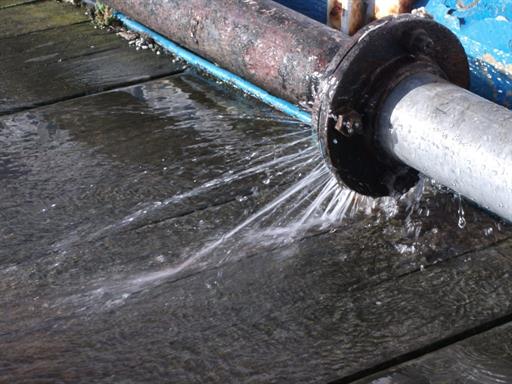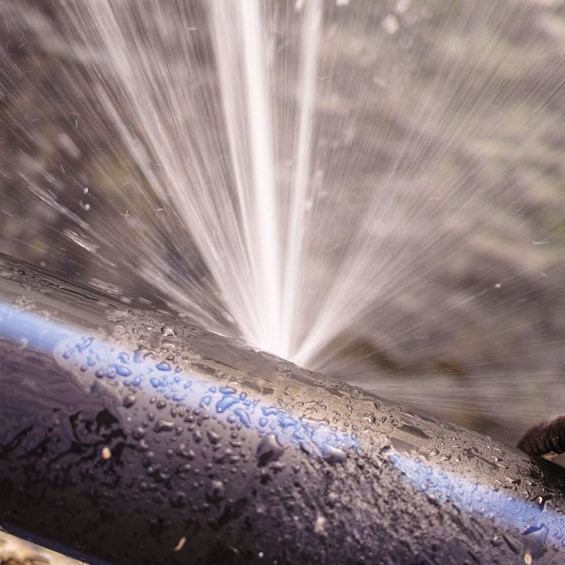Everything Homeowners Must Know About Septic Tank Maintenance
Everything Homeowners Must Know About Septic Tank Maintenance
Blog Article
How do you really feel about Water Damage Restoration Do’s And Don’t?

What should you do if a water pipeline ruptureds in your house? The longer you wait, the a lot more severe the damage that can take place to your residential property. For these reasons, you need to learn just how to act in the event of a ruptured water pipe.
Turn off the Main Waterline Valve
The first thing to do? Close the shut-off shutoff. Try to find the regional shut-off valve to turn off the water in one particular location just. If you don't know where the local shut-off shutoff is, opt for the main water line shutoff as well as turn it off. This action will remove the water promptly in your whole house. Generally, the primary valve is located outside the house next to the water meter. If it's not there, you can additionally discover it in two areas: in the basement at eye degree or the first floor on the ground. Commonly, home builders put the shut-off shutoff in the main ground degree shower room or best alongside it.
Call Water Damages Repair Pros for Help
After shutting the water source, call the experts for aid. With their expert help, you can avoid a lot bigger water damages including warped baseboards, loose ceramic tiles, or harmed frameworks.
Record the Damage For Insurance
While you're waiting for the pros to show up, get some paperwork of the damage triggered by the errant pipeline. Take photos and also video clips of every little thing. Do close-up shots of the harmed spots and valuables. Your documentation will function as evidence for your property owner's insurance. Keeping positive with this circumstance assists you to file a claim for protection, which will even more support you and your family to get back on your feet.
Recover Points That Can Be Saved
When you're done taking photos, analyze the damaged items and also obtain one of the most crucial ones from the stack. Dry them off in a dry/warm place far from the broken area and try to maintain them as long as you can. Drag as much moisture as you can to the material so it can start to dry out.
Beginning the Drying Refine
You require to start the drying procedure immediately. Fortunately, the water from your waterlines is already tidy so you do not have to worry about drain water. The moving water may have disturbed the dirt and particles in your rugs and floorboards. In this case, placed some gloves on and also start some damage control. Usage buckets to unload out the water. Blot out as much water as you can from the surfaces with old towels. Switch on an electric fan or open your home windows to promote air circulation. These actions will speed up to dry and also discourage mold and mildew as well as mold growth.
Specialists are the only people certified to assess properly and also repair the burs pipelines and succeeding damages. As always, pipelines don't simply suddenly burst out of heaven. They usually provide quiet red flags like gurgling paint, water discolorations. Strange sounds in the plumbing, caving ceiling, musty odor, or peeling off wallpaper. Keep in mind of these indications and also do some preventive measures so you can nip any type of concerns in the bud.
What should you do if a water pipeline bursts in your house? For these reasons, you require to find out how to act in the event of a burst water pipeline. After closing the water resource, call the professionals for assistance. With their professional aid, you can prevent much larger water damages consisting of deformed walls, loose ceramic tiles, or harmed frameworks. The good news is, the water from your waterlines is already clean so you don't have to fret regarding sewage system water.
How to Handle a Burst Pipe and Minimize Damage
Steps to Take Ahead of Time
If you own property in an area that experiences cold weather, you need to be aware of seasonal maintenance tasks that will help you protect your property as the weather changes each year. One of the most important steps is to winterize your pipes to ensure they won't freeze or burst when the temperature drops. This includes action items like insulating any exposed pipes, detaching garden hoses and covering outdoor faucets. If the weather gets cold enough, you may even consider leaving a faucet dripping or opening cabinet doors during the coldest parts of the day.
No matter how prepared you might be, accidents and emergencies still happen. You'd be wise to set up a savings account specifically for your property so you have a "rainy day" fund set aside for unexpected expenses. All homes—regardless of age, location or condition—will inevitably need some form of emergency repair.
Steps to Take for Frozen Pipes
A frozen pipe will not necessarily burst, so if you can catch a frozen pipe early on, you could save yourself a major headache. When your area experiences frigid temperatures, be sure to check your plumbing and keep an eye out for warning signs like faucets only releasing small amounts of water or toilets not refilling when flushed. If you do run into one of these issues, you're likely dealing with a frozen pipe.
If this happens, your first step should be to cut off the water supply to that section of the plumbing. Expanding and freezing water can quickly cause damage. Even if the water supply is shut off, you will likely still deal with some leaking from the water that defrosts after the pipe has thawed. Be prepared with a mop, bucket and/or towels to quickly soak up any excess water.
In order to thaw a frozen pipe, you can use a space heater, infrared or incandescent heat lamp, or even a hairdryer to warm up the frozen area. Heat tape is also an option and should be used according to manufacturer instructions. Do not use any sort of open flame to thaw frozen pipes, as it poses a major fire hazard and can damage your pipes further.
Steps to Take for a Burst Pipe
Water damage claims are the second most common insurance claim in the U.S. When you're dealing with a frozen pipe, the water continues to expand as it freezes, which creates pressure that can cause a pipe to burst. When this happens, the crack or leak in the pipe allows water flow from the pipe to enter your home where it shouldn't. If a pipe does burst, you need to act quickly to mitigate property damage and repair cost.
Your very first step should be to shut off your main water supply to minimize flooding—typically the most expensive damage to address. Once you've shut off the water supply, make sure you identify the entire area that has been impacted by the leak. Remove as much water as possible—as quickly as possible—using a mop, sponges, towels or a shop vacuum or wet/dry vacuum. To prevent long-term damage due to moisture build-up, run a dehumidifier or fan in the affected area. Contact a licensed plumber to ensure the pipe is correctly repaired before running any water to that section of the home again. Burst pipes and the associated water damage are something you absolutely want to avoid as a property owner. If you've had to learn your lesson the hard way, don't let yourself get caught in a similar situation during the next spell of cold weather. The best way to deal with frozen or burst pipes is to prevent them in the first place—proactive winter maintenance will save you time, money and a whole lot of stress.

I came across that blog post about Water Damage: Tips On What To Do When Your House Is Flooded while browsing on the web. Sharing is nice. Helping others is fun. I thank you for reading our article about Water Damage Restoration Do’s And Don’t.
Report this page